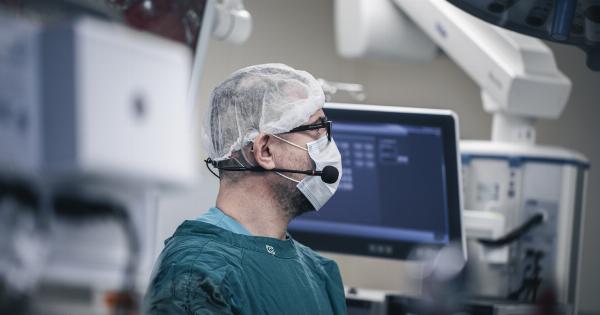Gastroesophageal reflux disease (GERD) is a common chronic condition that affects millions of people worldwide. It occurs when the stomach acid flows back up into the esophagus, causing symptoms like heartburn, regurgitation, and difficulty swallowing.
While the exact cause of GERD remains unclear, there are several factors that can contribute to its development. In this article, we will explore eight reasons why gastroesophageal reflux happens.
1. Weak Lower Esophageal Sphincter (LES)
The lower esophageal sphincter (LES) is a circular muscle located at the bottom of the esophagus. Its main function is to prevent the stomach acid from flowing back up into the esophagus.
However, when the LES is weak or dysfunctional, it fails to close properly, allowing the acid to reflux. The LES can weaken due to several factors like obesity, smoking, and aging.
2. Hiatal Hernia
A hiatal hernia is a condition where a part of the stomach pushes through the diaphragm and into the chest cavity. This can weaken the LES and allow the acid to reflux into the esophagus.
Hiatal hernias are more common in people over 50 years of age and can be caused by factors like obesity, pregnancy, and smoking.
3. Obesity
Obesity is a significant risk factor for GERD. Excess body weight puts pressure on the stomach, forcing the acid to reflux into the esophagus.
Additionally, obesity can weaken the LES and delay the emptying of the stomach, leading to prolonged exposure to the acid.
4. Smoking
Smoking is another factor that can contribute to GERD. Nicotine, a chemical present in tobacco, can weaken the LES and reduce its effectiveness in preventing acid reflux.
Additionally, smoking can increase stomach acid production and delay the emptying of the stomach, leading to prolonged acid exposure to the esophagus.
5. Pregnancy
Pregnancy can also increase the risk of GERD. The hormonal changes during pregnancy can relax the LES and delay the stomach’s emptying, leading to prolonged acid exposure.
Additionally, the growing uterus can put pressure on the stomach, further increasing the risk of reflux.
6. Certain Foods and Drinks
The type of foods and drinks we consume can also influence GERD symptoms. Spicy, acidic, and fatty foods can irritate the esophagus lining and increase stomach acid production, leading to reflux.
Additionally, caffeine, alcohol, and carbonated drinks can also weaken the LES and delay stomach emptying.
7. Medications
Several medications can increase the risk of GERD. For instance, nonsteroidal anti-inflammatory drugs (NSAIDs), such as ibuprofen and aspirin, can irritate the stomach lining and increase acid production, leading to reflux.
Other medications like calcium channel blockers, sedatives, and antidepressants can also relax the LES, making it easier for the acid to reflux.
8. Anxiety and Stress
Anxiety and stress can also contribute to GERD. Psychological stress can increase stomach acid production and delay the stomach’s emptying, leading to prolonged exposure to the acid.
Additionally, anxiety can cause muscle tension, including the LES, further increasing the risk of reflux.
Conclusion
Gastroesophageal reflux disease (GERD) is a complex condition caused by various factors. While some of these factors are beyond our control, others can be managed through lifestyle changes and medication.
If you are experiencing GERD symptoms, it is essential to seek medical advice for proper diagnosis and treatment.




























